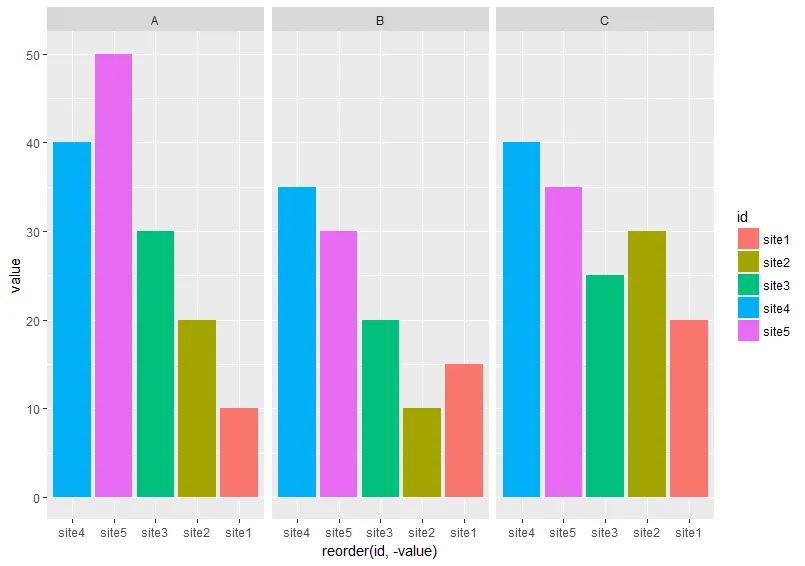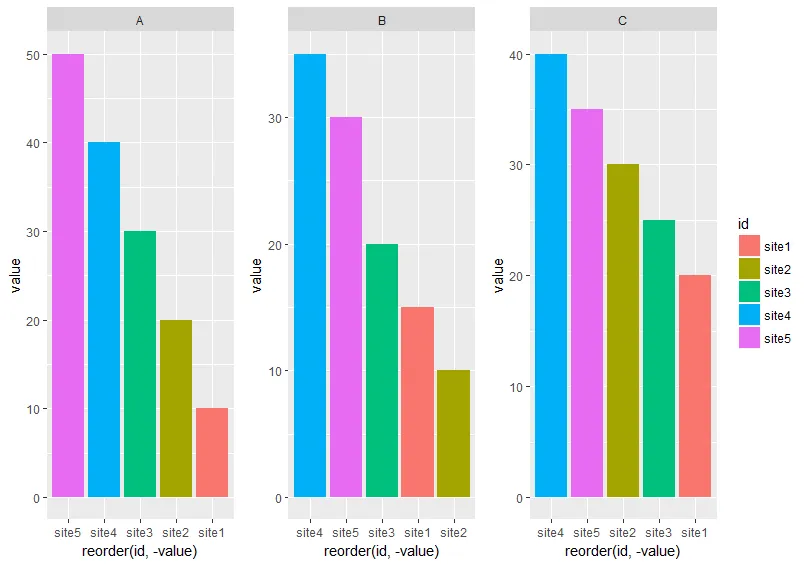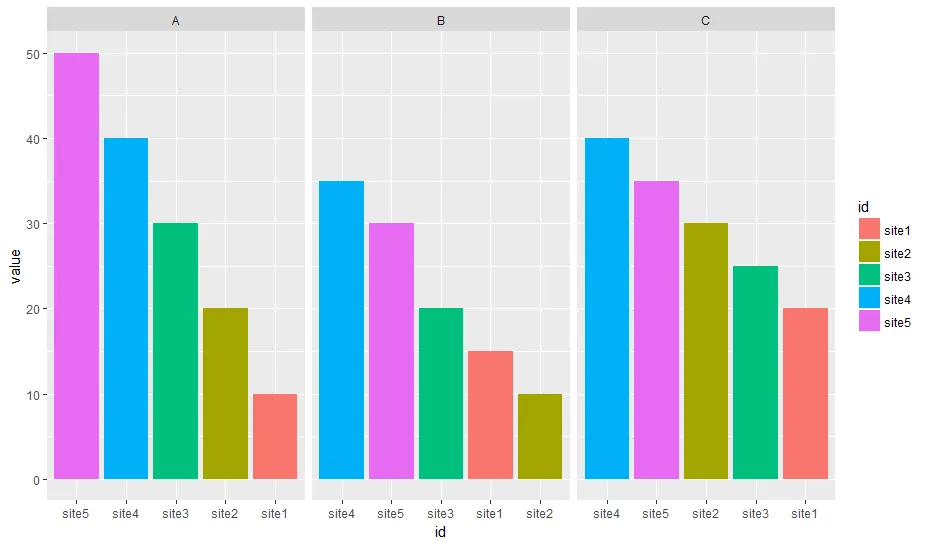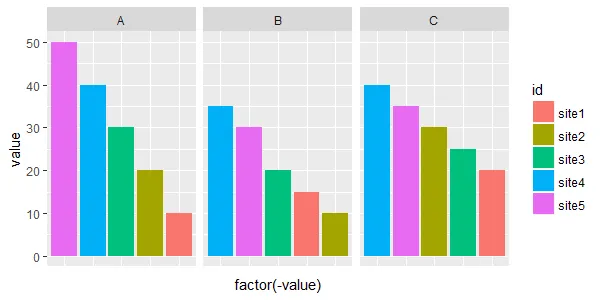在下面的
我尝试过:
df 中,我想要按照每个分面内的从高到低重新排序条形图。我尝试过:
df <- df %>% tidyr::gather("var", "value", 2:4)
ggplot(df, aes (x = reorder(id, -value), y = value, fill = id))+
geom_bar(stat="identity")+facet_wrap(~var, ncol =3)
它没有按照每个方面将条形图从高到低排序。
我想出了另一种方法来达到我想要的目的。我必须逐个变量绘制图表,然后使用grid.arrange()组合所有图表。
#I got this function from @eipi10's answer
#https://dev59.com/oZnga4cB1Zd3GeqPXVgm#38640937
#Function to extract legend
# https://github.com/hadley/ggplot2/wiki/Share-a-legend-between-two-ggplot2-graphs
g_legend<-function(a.gplot) {
tmp <- ggplot_gtable(ggplot_build(a.gplot))
leg <- which(sapply(tmp$grobs, function(x) x$name) == "guide-box")
legend <- tmp$grobs[[leg]]
return(legend)
}
p1 <- ggplot(df[df$var== "A", ], aes (x = reorder(id, -value), y = value, fill = id))+
geom_bar(stat="identity") + facet_wrap(~var, ncol =3)
fin_legend <- g_legend(p1)
p1 <- p1 + guides(fill= F)
p2 <- ggplot(df[df$var== "B", ], aes (x = reorder(id, -value), y = value, fill = id))+
geom_bar(stat="identity") + facet_wrap(~var, ncol =3)+guides(fill=FALSE)
p3 <- ggplot(df[df$var== "C", ], aes (x = reorder(id, -value), y = value, fill = id))+
geom_bar(stat="identity") + facet_wrap(~var, ncol =3)+guides(fill=FALSE)
grid.arrange(p1, p2, p3, fin_legend, ncol =4, widths = c(1.5, 1.5, 1.5, 0.5))
我想知道是否有一种简单的方法可以帮助我按照所有维度从高到低排序条形图,而不必分别绘制每个变量,然后将它们组合起来。任何建议都将不胜感激。
数据
df <- read.table(text = c("
id A B C
site1 10 15 20
site2 20 10 30
site3 30 20 25
site4 40 35 40
site5 50 30 35"), header = T)



